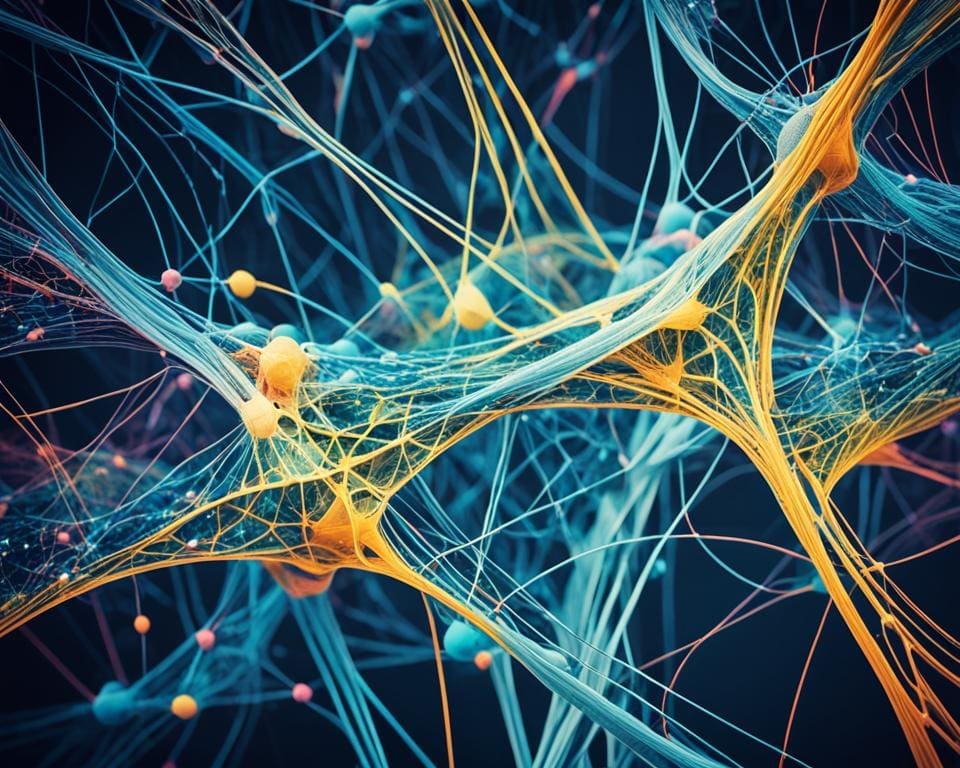In the modern business world, using machine learning for predictive analytics is vital. It helps organisations get better at what they do. By using machine learning, companies can look at large amounts of data. This helps them predict trends and how customers will act.
This mix of predictive analytics and data science improves how companies make decisions. It also lets them develop strategies to stay ahead of others.
Artificial intelligence allows for quick processing of a lot of data. It shows patterns and links that were hard to see before. In retail, businesses use predictive modelling to guess customer actions. This shows how data analysis helps keep customers loyal.
Statistics show how supervised learning can predict important things in healthcare, like when patients might return to the hospital. This makes organisations more efficient and focused on data.
The Transformative Power of Machine Learning in Data Analysis
Machine learning is changing how we analyze data, making businesses smarter in spotting trends. Companies are using advanced algorithms to look into big data. This helps them make better decisions and give customers what they want.
Enhancing Accuracy in Trend Forecasting
Machine learning is key for predicting future trends accurately. It looks at data to find patterns in how customers act and the market moves. This helps businesses stay ahead by changing their plans early.
Real-Time Data Analysis for Strategic Decision Making
Machine learning lets companies make quick decisions with real-time data analysis. They can see changes in what customers want or market trends right away. Being fast to adapt is essential for success in today’s quick world.
Case Study: Retail and Consumer Behaviour Predictions
In retail, predictive analytics show how machine learning understands shopping habits. Stores look at past buys to guess future trends. This shapes marketing and stock choices. For example, Amazon uses machine learning to suggest products better, boosting sales and making customers happier.

Leveraging Machine Learning for Predictive Analytics
In today’s fast-paced world, organisations use predictive analytics to make sense of data for future trend predictions. They apply statistical techniques and machine learning to change raw data into useful insights. This helps them make better decisions and improve how they operate.
Understanding Predictive Analytics
Predictive analytics combines statistics, like regression and clustering, with machine learning algorithms. This mix allows organisations to sift through loads of data for strategic insights. For example, neural networks help spot diseases in medical images. This shows machine learning’s crucial role in healthcare, aiding in better patient care and efficiency.
Applications in Various Industries
Predictive analytics is used widely, from healthcare to finance to marketing. In healthcare, it helps predict patient needs for better treatments. Finance uses it for risk assessment and fighting fraud. Marketing teams improve campaigns and customer loyalty by predicting behaviours. Travel companies like Hopper and Kayak predict flight prices, improving customer service.
Key Statistical Techniques and Models
Understanding key statistical methods boosts predictive analytics. Techniques include propensity, forecasting, and churn models, useful across sectors. For instance, sentiment analysis in AI tools analyses feedback for enhanced customer interaction. The predictive analytics market is booming, expected to hit $41.52 billion by 2028. This underlines the growing dependence on these techniques in various industries.









